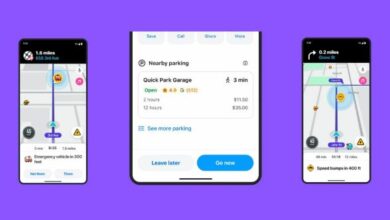Top Tech Innovations Revolutionizing K-12 Education


In an era defined by rapid technological advancement, education is no exception to the wave of digital transformation. Educators and students alike are benefiting from technologies that offer innovative methods for learning, teaching, and administration. The following is an overview of the top tech trends shaping K-12 education today.
Interactive Whiteboards
Interactive whiteboards like SMART Boards have revolutionized the traditional classroom setup. They provide an interactive and dynamic platform for teachers to deliver content, showcase multimedia, and involve students in hands-on learning. Teachers can pull up educational videos, interactive quizzes, and even cast students’ work from their tablets to the board.
Learning Management Systems (LMS)
Platforms such as Moodle, Blackboard, and Google Classroom are allowing educators to streamline their workflow. These Learning Management Systems (LMS) enable the distribution of course materials, the tracking of student performance, and the facilitation of online discussions, making learning more flexible and personalized.
Virtual Reality (VR) and Augmented Reality (AR)
Imagine taking a field trip to the ruins of ancient Rome or exploring the human circulatory system—all without leaving the classroom. This is now possible with VR and AR tech. Companies like ClassVR and Google’s Expeditions are making immersive educational experiences more accessible than ever.
Artificial Intelligence (AI)
AI in education is not the stuff of science fiction but a tangible tool that can offer personalized learning experiences. Systems can analyze student performance in real-time, providing teachers with insights into individual learning styles and areas that may need improvement.
Tablets and 1:1 Devices
The introduction of tablets and laptops in a 1:1 ratio (one device per student) provides an interactive experience and democratizes access to digital resources. This tech allows students to research, create multimedia projects, and interact with their peers, fostering a more collaborative learning environment.
Gamification Platforms
Platforms like Kahoot!, Quizizz, and Classcraft are turning learning into a fun and interactive experience. These platforms use gaming mechanics like scores, challenges, and rewards to encourage student participation and retention of information.
Cloud Computing
No longer do students need to carry heavy backpacks filled with textbooks and notebooks. With cloud computing platforms such as Google Drive and Microsoft’s OneDrive, students and teachers can store, share, and access their work from anywhere with an internet connection.
Internet of Things (IoT)
IoT can contribute to safer and more efficient schools. From smart locks to automated heating, ventilation, and air conditioning systems, IoT technology can help administrators better manage school facilities.
3D Printing
3D printing technology is making its way into school curricula, offering hands-on learning opportunities in subjects like engineering, mathematics, and biology. Students can bring their digital designs to life, fostering creativity and practical understanding of complex subjects.
As technology continues to evolve, so will its applications in K-12 education. From enhancing classroom engagement to streamlining administrative tasks, tech innovations are making education more effective and inclusive. While it’s important to approach these advancements thoughtfully to ensure that they serve educational rather than distractive purposes, there’s no denying that tech is providing new avenues for enriching the educational landscape.
In the words of Nelson Mandela, “Education is the most powerful weapon which you can use to change the world.” With the aid of technology, that weapon is becoming more potent than ever before.





